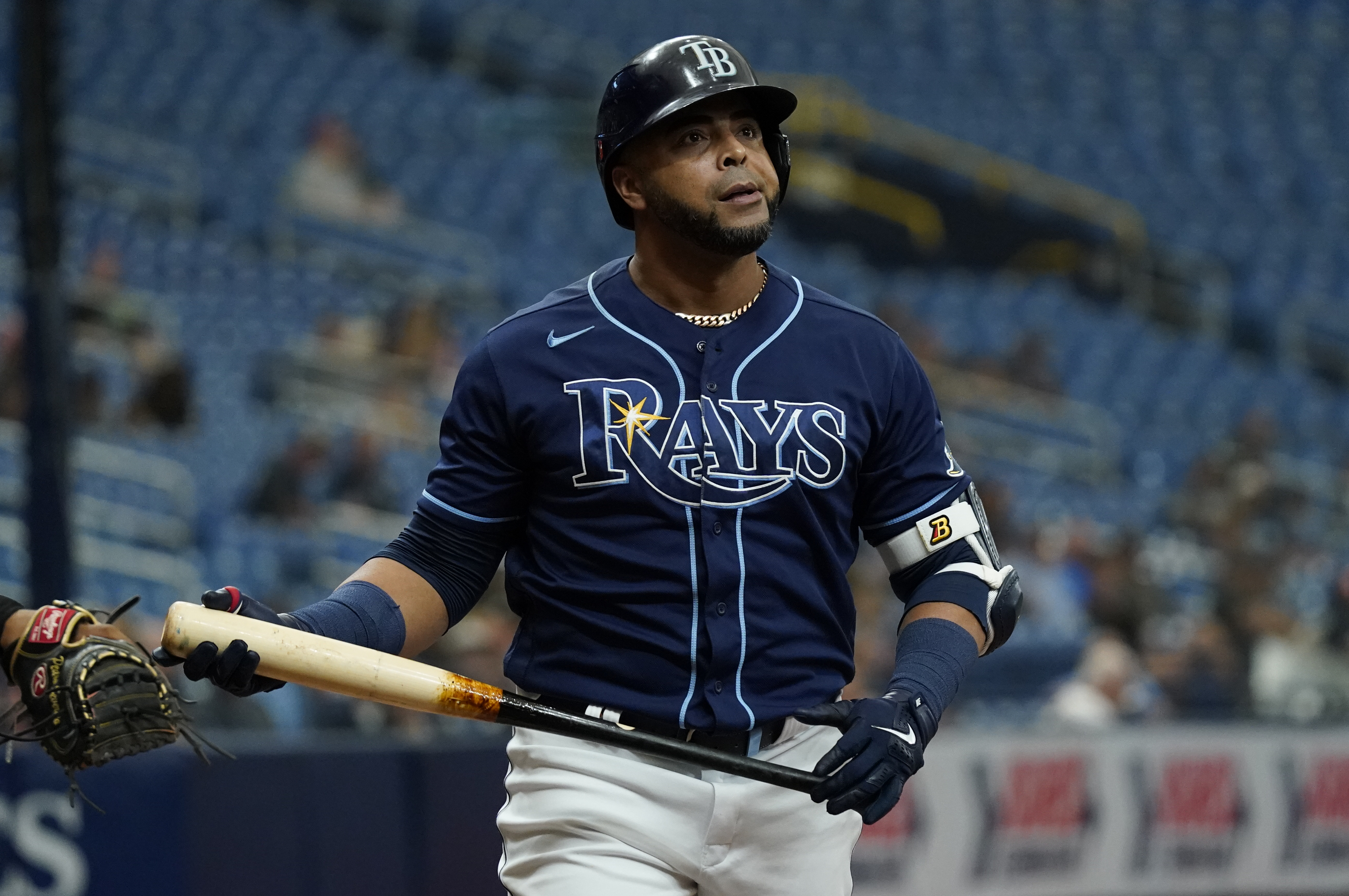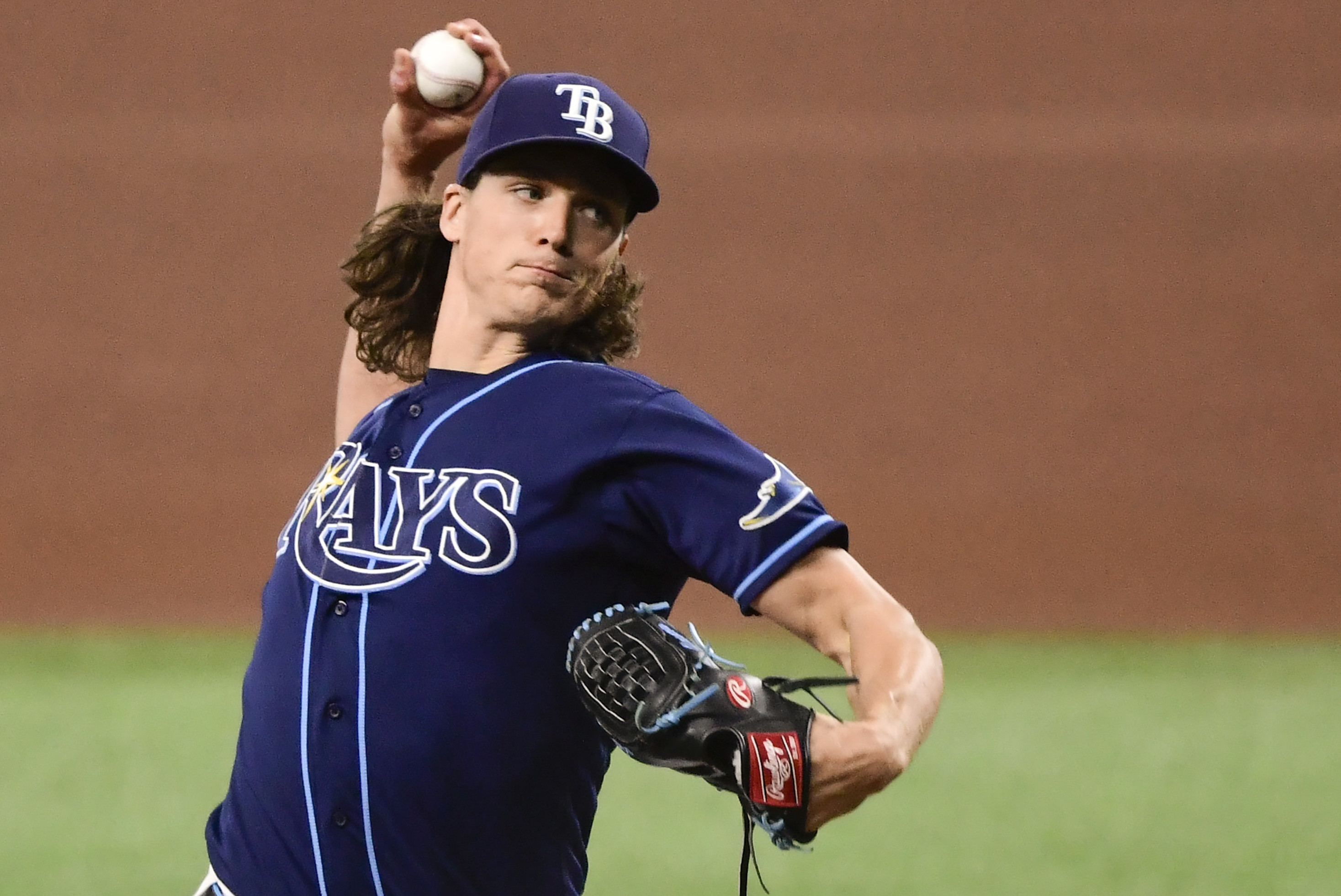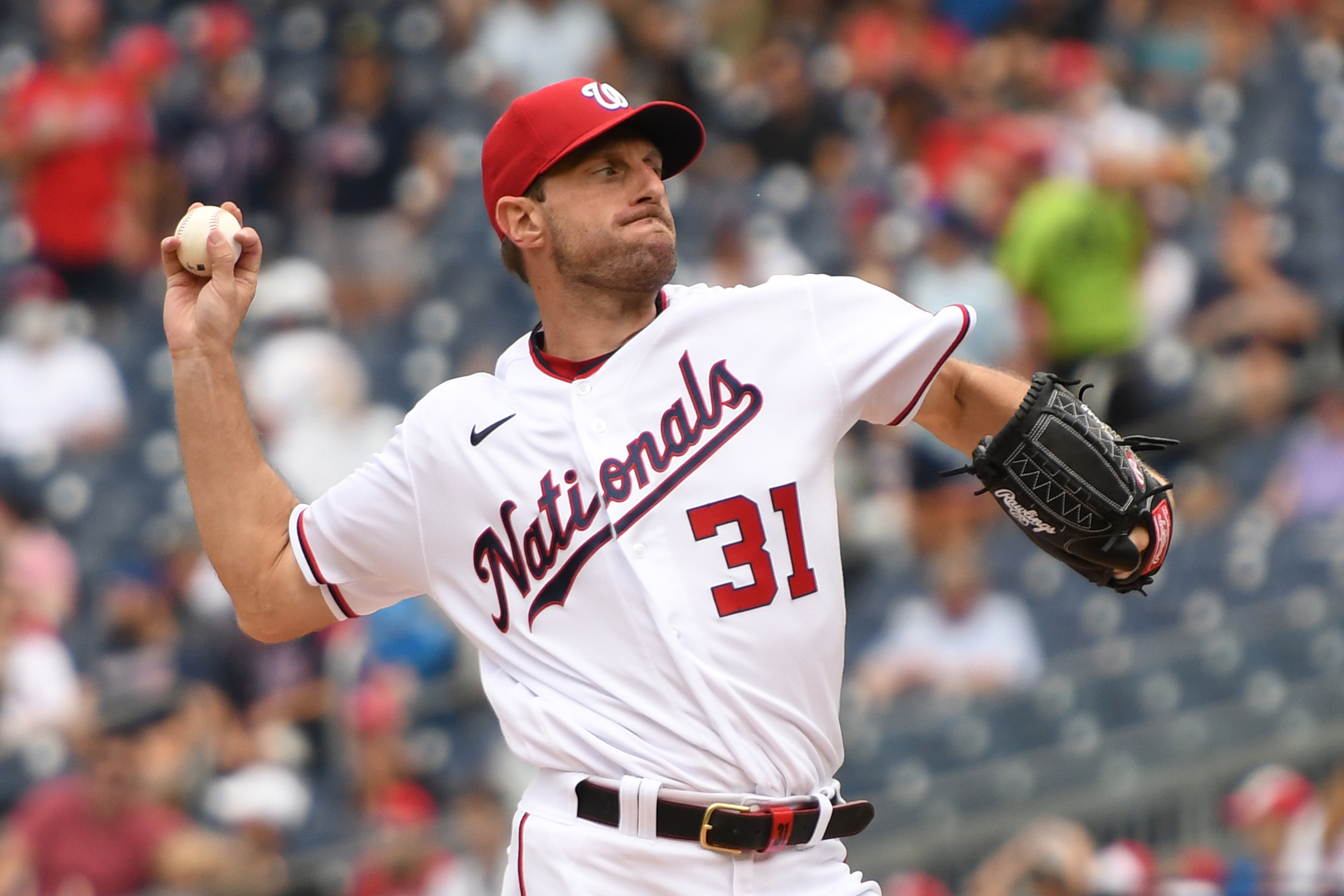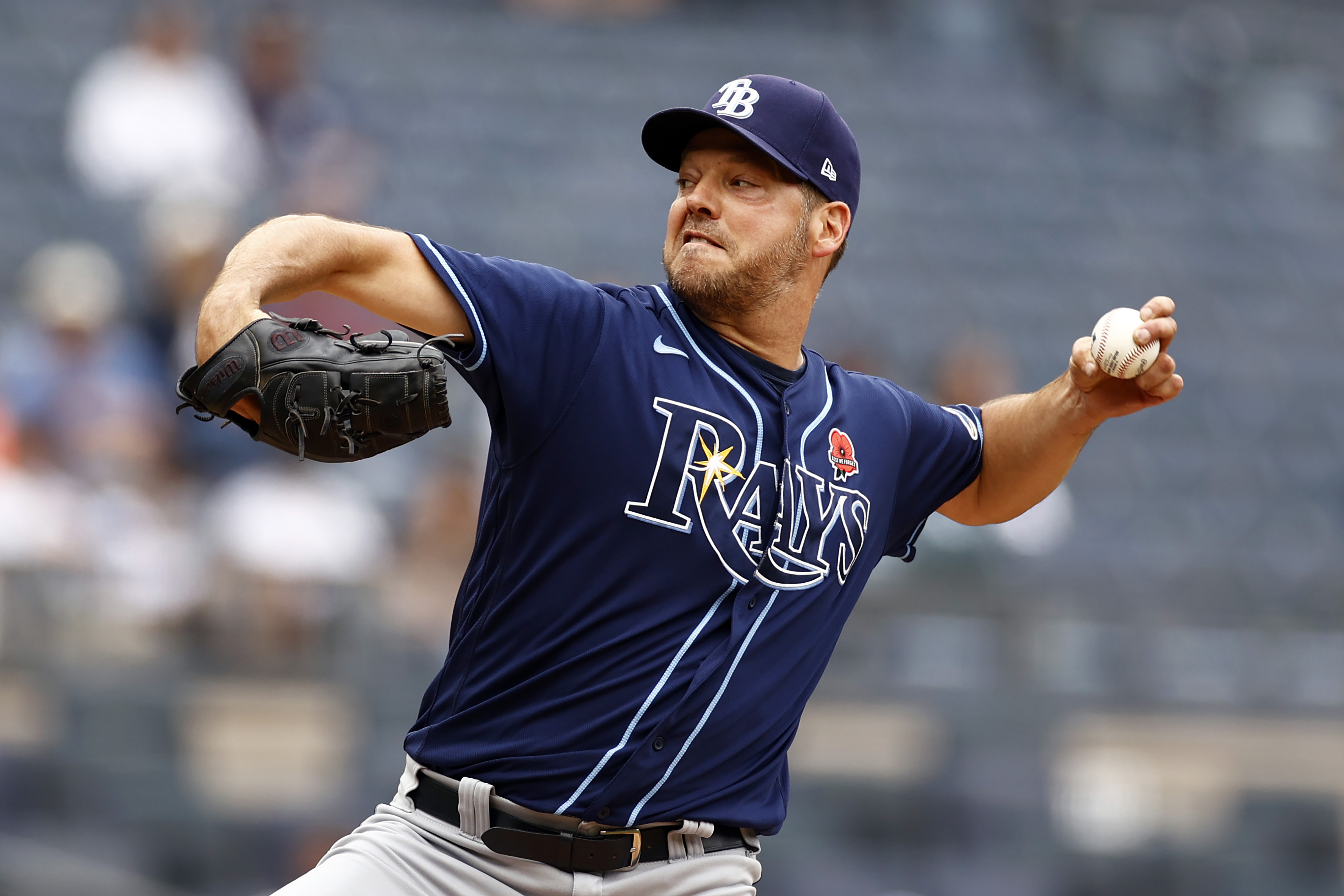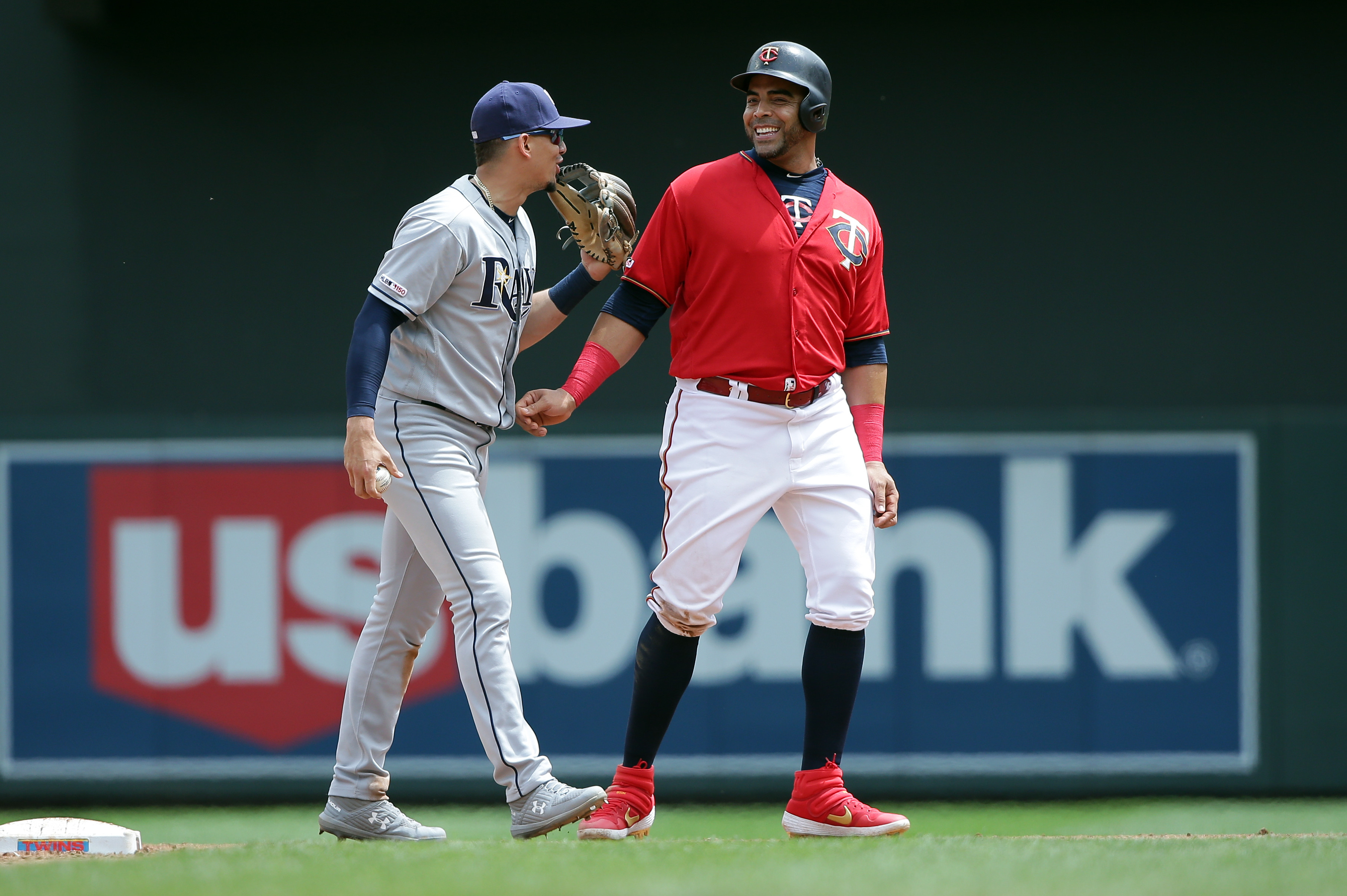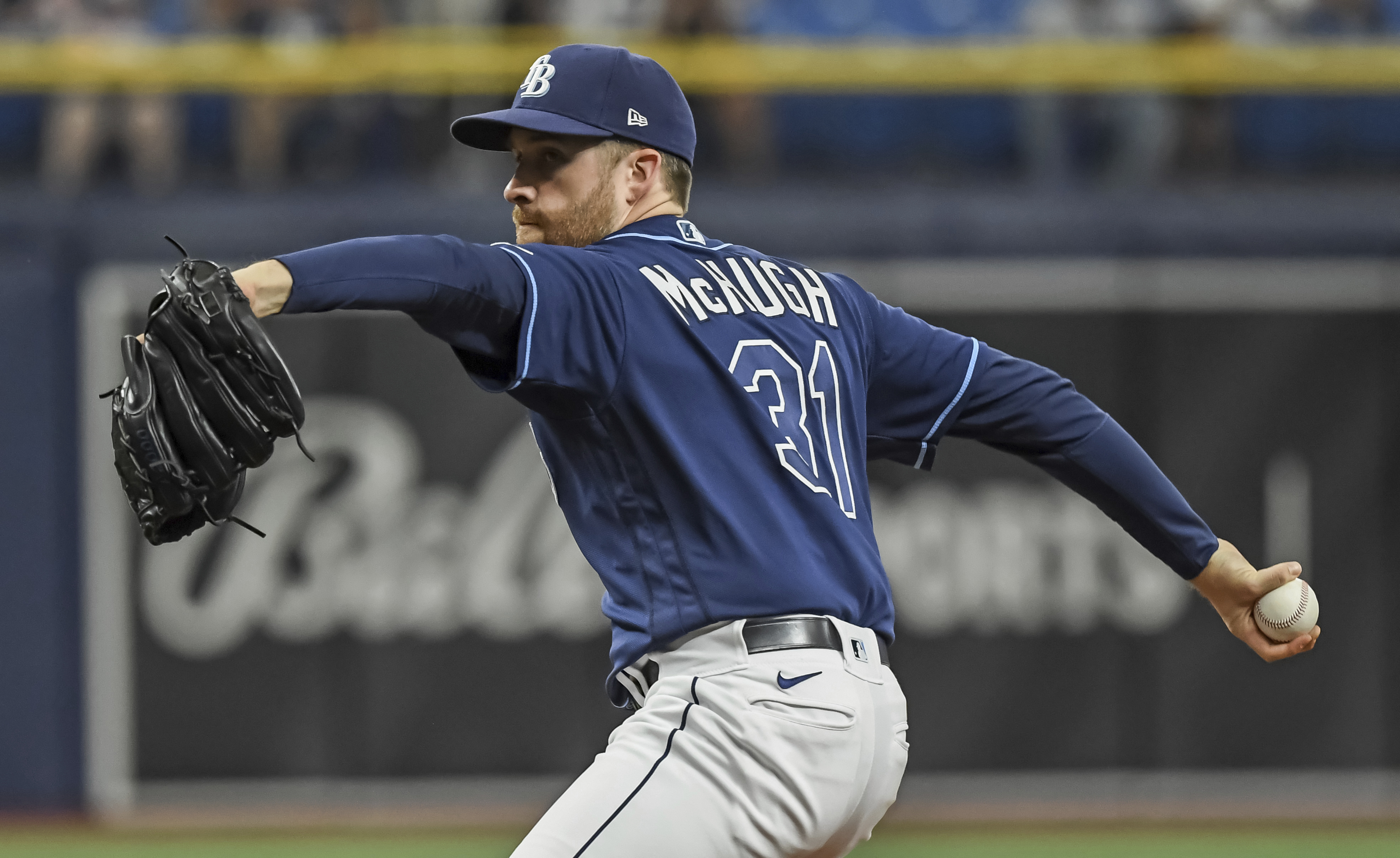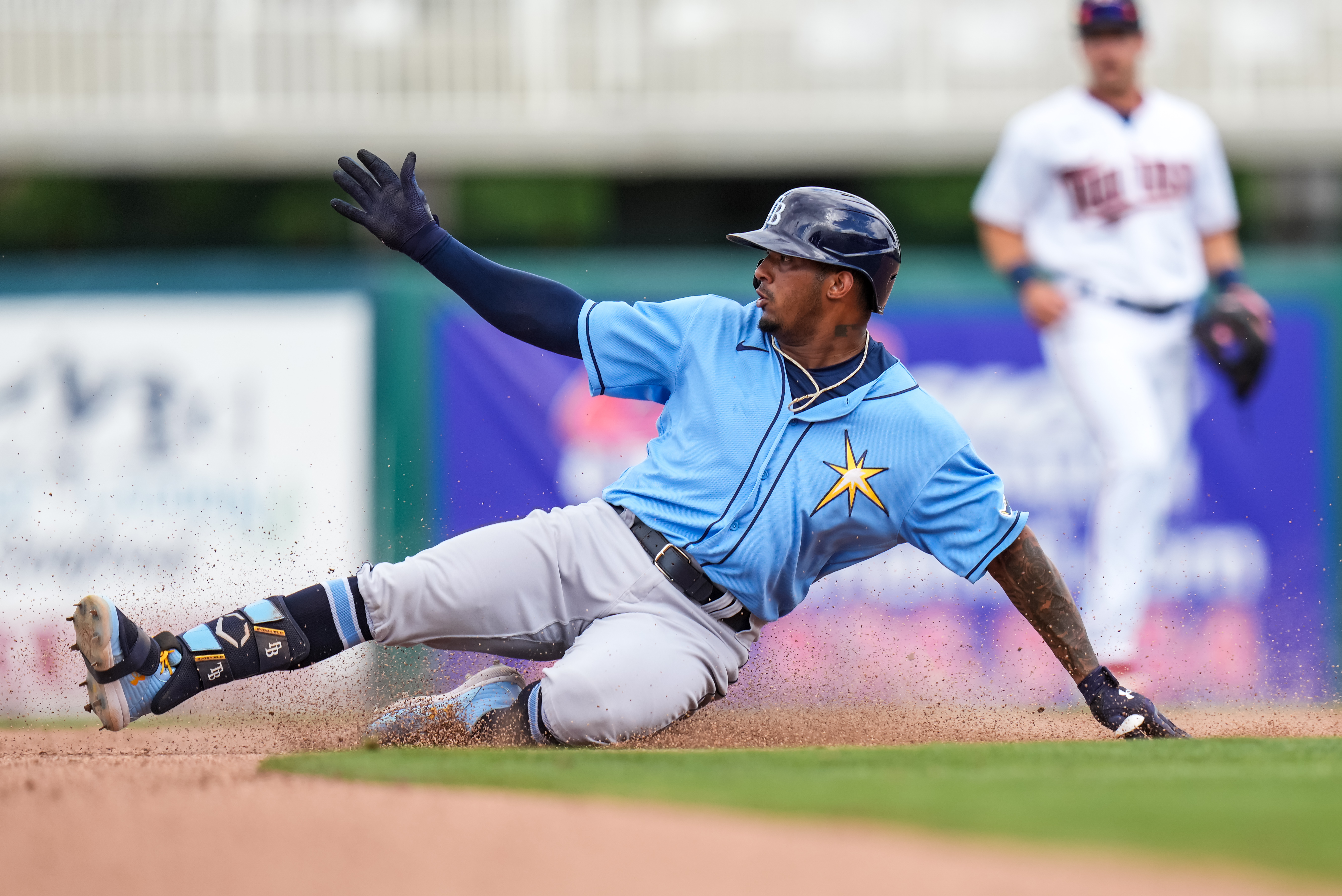Meet the 20-Year-Old Budding Superstar Primed to Take the MLB Playoffs by Storm
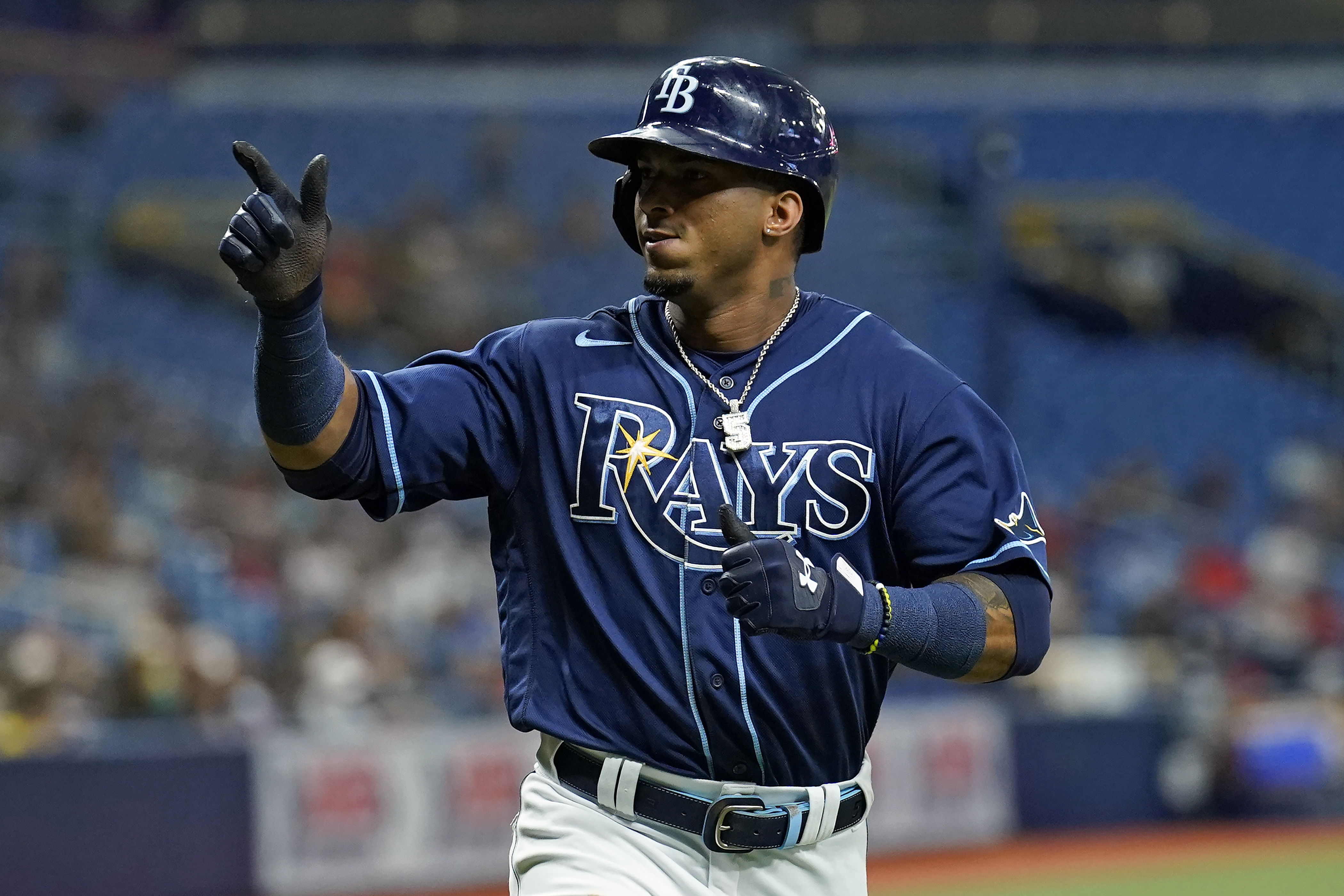
Just as it was a scintillating rookie who led the Tampa Bay Rays to the World Series in 2020, so too might another first-year player perform the same trick in 2021.
Move over, Randy Arozarena. It's Wander Franco's turn.
This is not meant as a slight against Arozarena, who's still technically a rookie and very much in the race for the American League Rookie of the Year. His stat line includes an .806 OPS, 18 home runs and 3.3 rWAR. Indeed, he actually leads Franco in the latter category.
Franco, though, has been charging hard over the last month or so. You've probably heard that he's gotten on base in 33 straight games, the most recent highlight of which was his two-run homer off Boston Red Sox ace Chris Sale on Wednesday:
Though he was able to add to his on-base streak with a seventh-inning walk on Thursday, Franco promptly had to leave the game with a headache. The Rays are monitoring him for concussion symptoms, though it's hopefully nothing that serious.
Franco is slashing .315/.387/.528 during his on-base streak and is up to a .794 OPS and 2.4 rWAR for the season. This is over just 56 games—48 of which have seen him start at shortstop—which would hypothetically put him on track for a 7.0-WAR season if he had been with the Rays from Opening Day. That's MVP territory, folks.
Of course, there are good reasons to pump the brakes on this hype train.
If 56 games is a small sample size, then 33 contests is a downright Lilliputian stretch. Franco and the Rays, whose 84-50 record has them atop the American League for the second time in as many years, have also been feasting on relatively weak competition of late.
Yet it's not as if Franco's rapid rise is surprising. He wasn't an ordinary prospect before he arrived in the big leagues on June 22 and, even though he's only 20 years old, it's already clear that he's no ordinary hitter as a major leaguer.
What Franco Was Supposed to Be
At the time the Rays called Franco to The Show in June, there wasn't much doubt that he was the No. 1 prospect in baseball. Nor was there much doubt that he was absolutely deserving of it.
At the outset of both this season and last season, Franco ranked as MLB's top prospect not just here at B/R, but also at MLB.com, Baseball Prospectus and Baseball America. FanGraphs was also in on the hype, with Eric Longenhagen going so far as to say that Franco "looks like, and has performed like, a generational talent and annual MVP contender."
Coming into 2021, the catch was that Franco didn't play in any professional games last year after the COVID-19 pandemic necessitated the cancellation of the minor league season. Accordingly, there was something resembling rust on him as he hit just .257 with seven strikeouts and one walk in 16 games with the big club during spring training.
After that, though, the Dominican Republic native promptly got back to tearing up the minors with Triple-A Durham. He slashed .315/.367/.586 over 39 games to bring his overall minor league line to .332/.398/.536 in 214 games.
More specifically, two things made Franco's minor league dominance even more exciting. For one, he was significantly younger than his competition every step of the way. For two, he refused to fit into the typical mold for young hitters by racking up 20 more walks than strikeouts in the minors.
As comps go, Jose Ramirez was one that Franco himself quite liked, per Baseball America. You could also squint and see the possible second coming of Juan Soto. Except this time, he'd be a switch-hitting shortstop instead of a left-handed-hitting corner outfielder.
What Franco Is Now
Upon reaching the major leagues, Franco made an immediate impression by going 2-for-4 with a three-run home run off Red Sox left-hander Eduardo Rodriguez. But after that, reality called to check on him.
In 14 games from June 23 through the end of the first half on July 11, Franco went just 10-for-57 with one homer. He was better out of the gate in the second half, but only to the extent that he went 9-for-34 with yet another lone homer in eight games through July 24.
Then began his on-base streak, during which he's looked a lot more like that fantastically tough out that he was in the minors. He's improved his walk rate from 6.8 percent before the streak to 9.2 percent during it and cut his strikeout rate in half from 20.4 to 9.2 percent.
When something like this happens, it's typically because a hitter started choosing his swings more carefully and benefited via increased contact against more hittable pitches. But Franco is doing things differently, as he's increased his swing and contact rates against pitches both inside and outside the strike zone:

On their own, the increased swing rates would imply that Franco decided to swing his way out of his slow start and is sticking with it because, hey, if it ain't broke, don't fix it. But in tandem with his improved contact rates, the picture is more so of a guy who's adjusted to the speed of the major leagues and is swinging comfortably.
This theory is further solidified by Franco's about-face against high fastballs. Through July 24, he was 0-for-11 against four-seamers at or above the top of the strike zone. He's 10-for-25 against such pitches since then, a sample that notably includes the 95 mph heater from Sale that he took for a ride Wednesday.
As reported by John Tomase of NBC Sports Boston, you can take it from Sale himself that a normal big leaguer doesn't hit a pitch like that over the wall:
Those are the ones you don't lose sleep over, honestly. That's not a home run pitch. He's not supposed to hit that ball out. That was me vs. him and he won. That's one of those cliche moments where you tip your cap, but it's true. Not too many guys can get to that.
You know what else is hard to do in the major leagues? Hit sliders. They are baseball's signature nasty pitch, and increasingly so as the leaguewide average against them has descended from the .220 range in the late 2000s to the .210 range in the early 2020s.
For Franco, though, sliders have presented little problem. He's hitting .360 and slugging .840 against them. In terms of run value per 100 pitches, he's the best slider hitter in the game.
Mind you, this is just the stuff that can be quantified. To actually watch Franco is to see a constant display of more intangible, dare we say Gwynn-ian, hitting qualities. He's just one of those guys who knows what to do with different pitches, whether it's:
- A sinker with the infield shifted? Poke it through the hole for a single.
- Fastball on the inner half? Turn on it and line it to left for a single.
- Backdoor cutter? Whack it the other way down the line for a double.
- Hanging changeup? Hit it to the dang moon for a home run.
As such, it's misleading that some of his Statcast metrics, such as exit velocity and hard-hit rate, have either been static or gotten worse during his on-base streak than they were before. That would imply he's been lucky, when the eye test confirms what he really is, is locked in.
What Franco Could Still Be
Small sample size be damned, Franco is one of the best hitters in the American League. Among AL hitters who've taken at least 130 plate appearances since July 25, his 155 wRC+ ranks fourth.
The next step for Franco involves proving he can keep the hits coming under the oh-so-bright lights of October. That's a difficult test, but the fact that he's gotten so hot even as he's carried the No. 1 prospect label in the thick of a pennant race is as good as omens get.
Come 2022, Franco should be at least a dark horse for the American League batting title. His switch-hitting will be an inherent leg up in that regard, and he may well outlast batting average luminaries Michael Brantley and Vladimir Guerrero Jr. if he can pick up where he left off from this season.
What's harder to predict is whether Franco will come into still more power, but it's a good guess that he will.
He may only be 5'10", but he's a well-put-together 5'10" at a muscular 189 pounds. Not unlike Guerrero during his first two seasons, Franco's only missing link may reside in his ability to consistently elevate the ball. His average launch angle (9.5 degrees) and sweet spot rate (33.3 percent) could stand to go a little higher.
His defensive ceiling is still another question mark, as none of the major defensive metrics (OAA, DRS and UZR) rate him as a particularly gifted shortstop. That tracks with scouting reports on his defense, seemingly none of which billed him as the next Andrelton Simmons.
Even if Franco's power and defense remain stuck in neutral, however, the Rays will still have something like a switch-hitting Xander Bogaerts. If the power comes, it will be as if Franco is their very own Soto at shortstop. If the power and the defense come...well, think 2017-2019 Francisco Lindor turned up to maximum.
Bottom line? Go ahead and dream big on Franco. No matter how he turns out, he's one prospect who won't break your heart.
Stats courtesy of Baseball Reference, FanGraphs and Baseball Savant.

